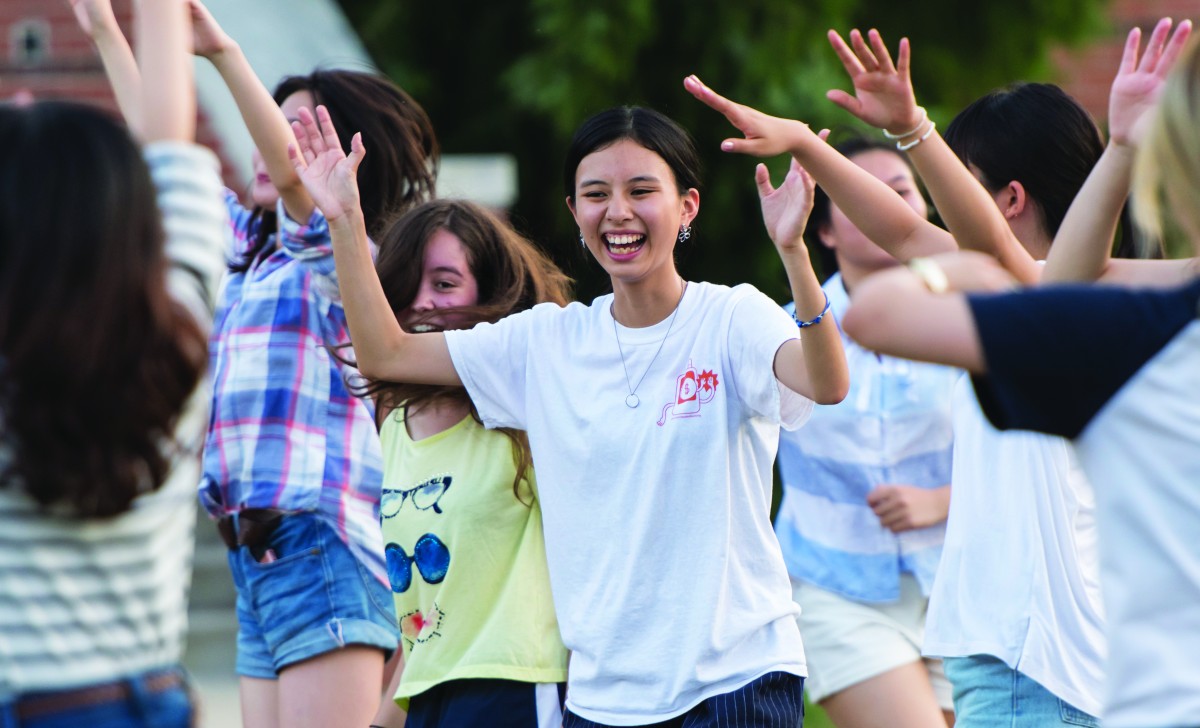Managers. Sales heads. Billionaire authors. College presidents. TV hosts. Presidential candidates.
JK Rowling. Jon Stewart. Narendra Modi. Jack Ma. Benazir Bhutto. Nelson Mandela.
Majoring in the humanities pays off – just ask these influential people listed above.
It’s no wonder there were five million professional employees holding a bachelor’s degree in humanities in 2015, as The State of the Humanities 2018: Graduates in the Workforce & Beyond report found.
Humanities is one of the four tenets of a liberal arts degree – along with natural sciences, social sciences, and mathematics. Together, they form a well-rounded foundation for several in-demand jobs today. But just why is that?
According to the Association of American Colleges and Universities (AACU) president Lynn Pasquerella, it’s because critical thinking stemming from a liberal arts education is “more valuable than ever.”
“In a world that is increasingly globally interdependent, and where rapidly changing technology means rapid obsolescence, the best that we can offer students today is the capacity to work with others who are different from themselves in diverse teams. And to be adaptable and flexible in a world where the jobs of the future have not yet been invented,” she said.
After all, the multidisciplinary nature of liberal arts courses equips graduates not only with vast knowledge but a multitude of skills that can be applied across industries.
An AACU report indicated that 93 percent of employers value soft skills such as creativity and problem-solving more than a candidate’s undergraduate major. To employers, liberal arts graduates have the right skills and attitude to be moulded into star employees.
It’s not just employers who love liberal art graduates. Considering this study by Georgetown University Center on Education and the Workforce, liberal arts graduates themselves stand to gain great financial incentives further down their career pathway.
This study found that “education at a liberal arts college pays off more than an education at other colleges” in the long run – even those with numerous STEM majors.
With all this in mind, is it any surprise that liberal arts graduates are in demand within today’s workforce? If you want to gain this competitive edge, these renowned institutions within the US should top your list.
DEPAUW UNIVERSITY
As Indiana’s top-rated liberal arts university, DePauw offers various majors and minors encompassing the sciences and humanities. These are disseminated via multiple academic centres, including ethics, media, entrepreneurship and technology.
Its School of Music is one of the country’s firsts, balancing art and business aspects to provide a well-rounded education for future professionals.
DePauw fares well in rankings, too. In the US, it places fourth among baccalaureate institutions for the percentage of undergraduates who studied abroad. It is also the biggest mover in this year’s US News & World Report ranking, jumping 10 spaces to land at 46th spot.

DePauw University
Why? Well, students are satisfied with their faculty and course, which can be attributed to experienced professors who deliver world-class programmes in small, personalised classes.
Additionally, excellent students are privy to numerous honours, study abroad, academic, research, and internship opportunities to prepare them for the professional world. DePauw provides generous merit scholarships, awards and need-based grants for international students. Selection is based on prior academic strengths, leadership and community service.
Another major draw is the various clubs, societies, and sports activities at DePauw for fun, camaraderie and to enhance your resumes for future employment opportunities.
When you choose DePauw, you receive the Gold Commitment that guarantees a 100 percent graduate success rate. So if you’ve not landed a job within six months of graduation, the university and its partners will either grant you a full-time entry level position or an additional semester without tuition fees.
AMHERST COLLEGE
Since 1821, Amherst College has emphasised the value of liberal arts and critical thinking through its academic offerings. Here, you can choose from 40 arts, sciences, social sciences and humanities majors.
The campus is scenic since it sits on a 1,000-acre plot with 500-acre wildlife sanctuary.
As a private, not-for-profit college, Amherst has one of the most substantial financial aid programmes in the US. In 2018, 70 percent of all graduates left without any student loan debt. This frees them up for further academic study – in fact, 80 percent of Amherst alumni go on to attend graduate or professional school.
The student body is diverse and lively with faculty members and students from 54 countries. However, each class has less than 30 students – focused teaching of the open curriculum is key to undergraduate success here.

Shutterstock
Students find the support they need to prepare for a successful career at the Loeb Center, which offers the right resources and guidance for future graduates. Before that, they will have the opportunity to see the world via global education programmes, engage in meaningful community work, and conduct impactful research within their faculty.
Upon graduation, Amherst students join a faculty of over 22,500 members – some of whom mentor the next generation of liberal arts graduates.
SEWANEE: THE UNIVERSITY OF THE SOUTH
Sewanee’s campus dwells within a verdant environment with a 65-mile (105 km) hiking network, earning its reputation as a “living, learning laboratory”. In line with that, students can choose to take on one of the 13 environmental courses and join the Sewanee Outing Program for a real-life lesson in the natural world.
The environment is one of the many undergraduate research interests at the university, on top of sciences, arts, English and politics.
In terms of programmes, students can choose from 37 majors, 43 minors, 15 programmes and pre-professional programmes in various major industries, including arts.
Besides that, the university’s high employment rate speaks for the diversity of a liberal arts education – 98 percent of graduates are employed or go on to graduate school or service commitment all around the world within six months of graduation.

Shuttterstock
Graduates’ exposure to the working world begins with summer internships and research assistantships. Sewanee students have expanded their horizons to 21 US states and 17 countries thanks to the university’s funding programme, which offers a stipend to students who are working unpaid internships.
Sewanee goes one step further in establishing career relevance with its Finding Your Place programme, where students take part in environmental and cultural engagement projects before starting their first semester. The university’s commitment to community work was recognised by The Carnegie Foundation this year.
*Some of the institutions featured in this article are commercial partners of Study International
Liked this? Then you’ll love…
Liberal Arts Colleges preparing students for a tech enabled world
Ignite your social sciences and policy career in the home of the Experiential Liberal Arts










